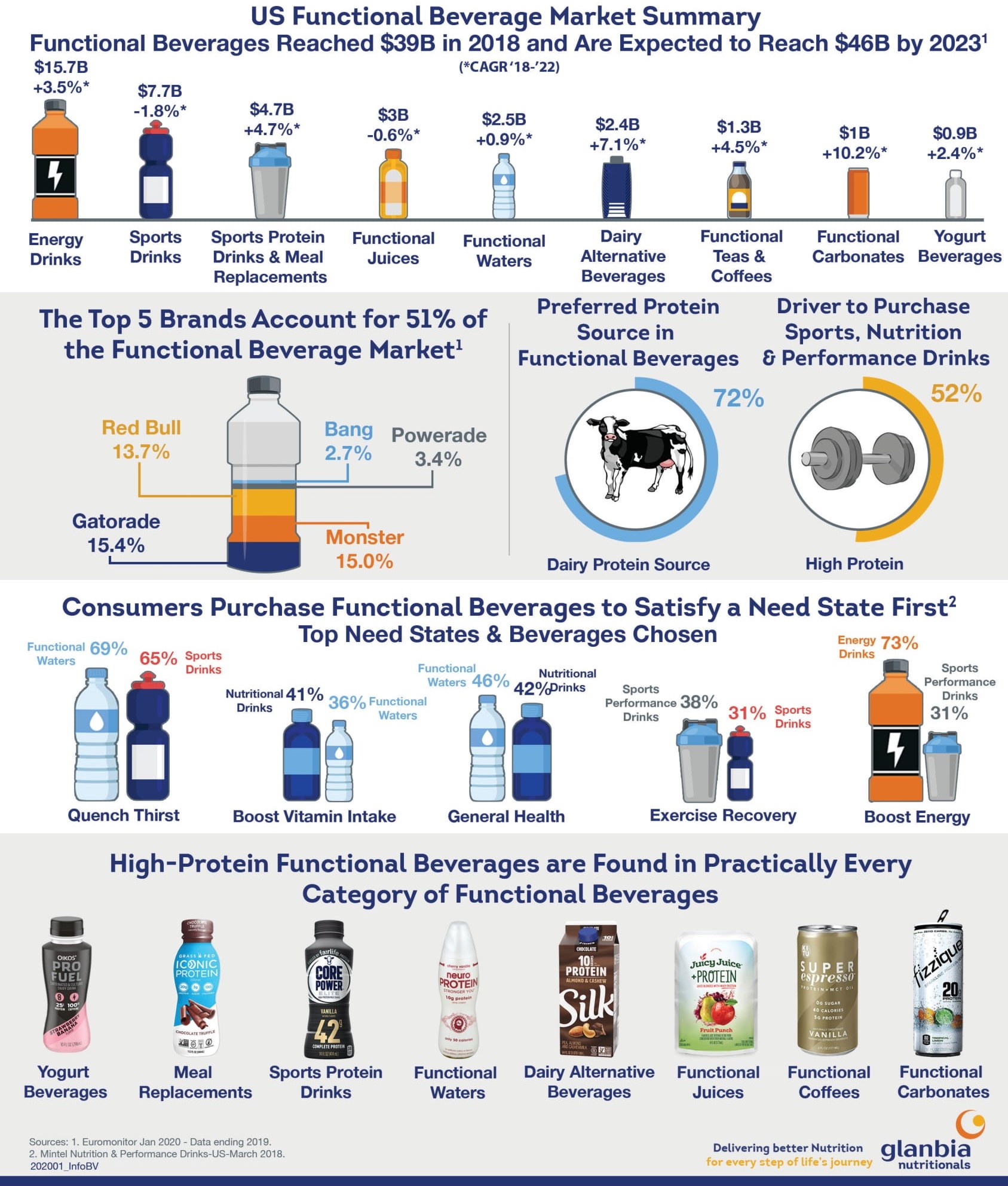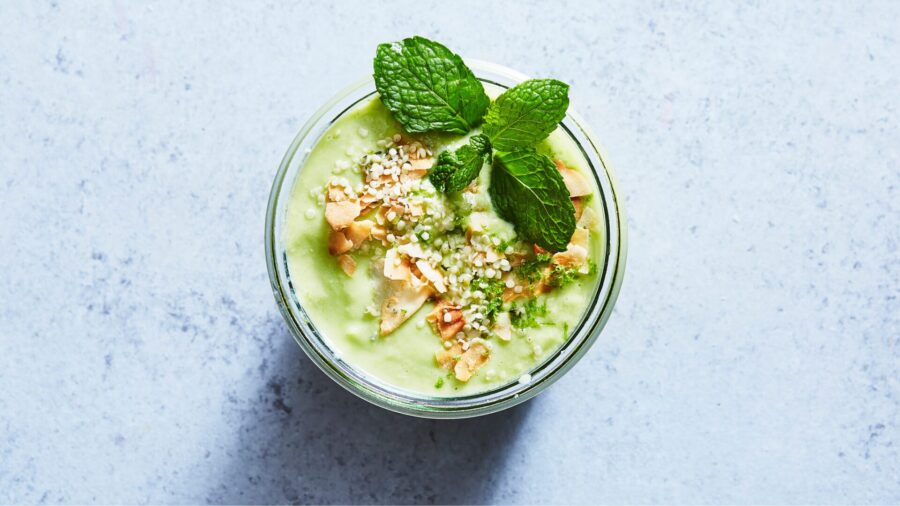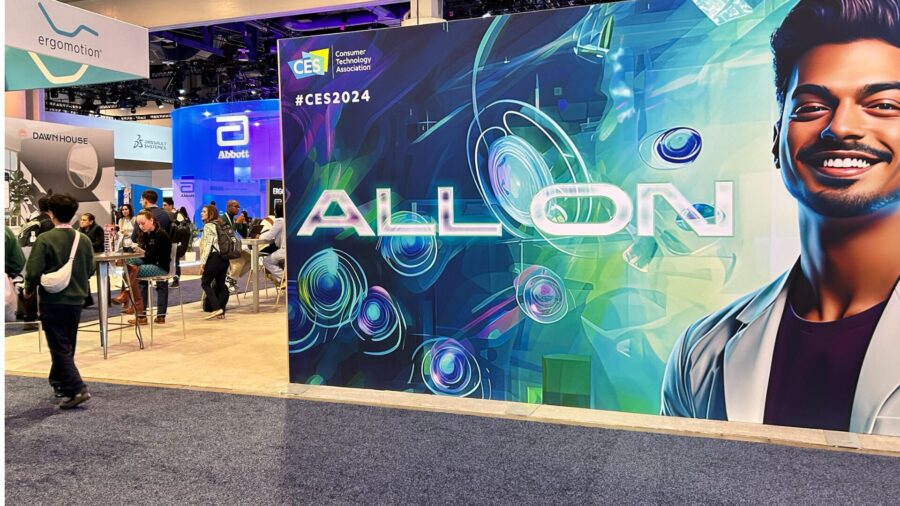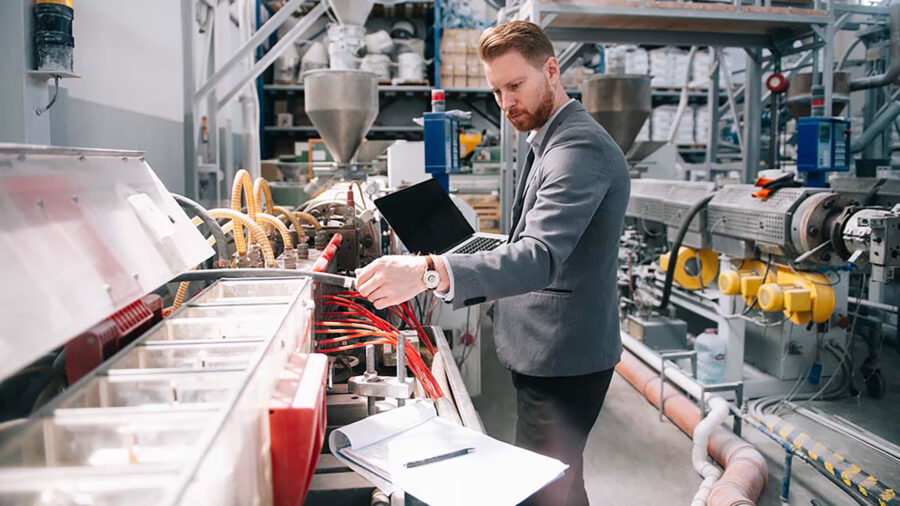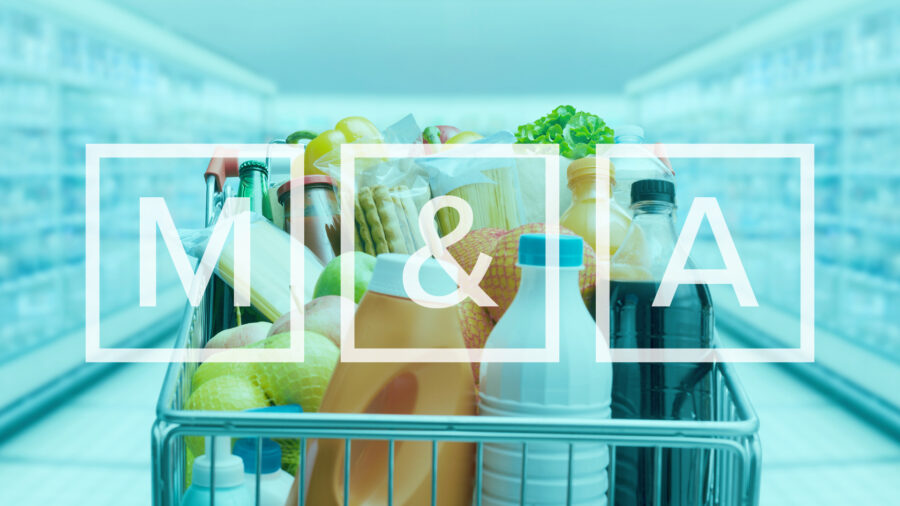The beverage industry generally consists of 10 categories—bottled water, beer, coffee, soft drinks, dairy, energy drinks, juice, sports drinks, tea, and wine and spirits. But trends can cross category lines. Here we look at five: more functional ingredients, less sugar, plant-based, low- and no-alcohol adult beverages, and ready-to-drink (RTD) beverages.
Functional Ingredients
Consumers expect functional benefits from their drinks. “The jolt of energy from a low-cost soda is no longer enough,” according to the Top 2020 Beverage Trends and Insights from KPMG. “Consumers want clean ingredients, mental clarity, more energy, improved athletic performance, better mood, and lower stress.” Examples include collagen water for hair and skin, kombucha for digestive health, and CBD for reducing anxiety and pain. KPMG expects the global functional beverages market to reach $208.13 billion by 2024, a CAGR of 8.66% from 2019-2024.
In the U.S. market, functional beverages could reach $46 billion by 2023, up from $39 billion in 2018, according to Euromonitor data reported
by Glanbia Nutritionals in Feb. 2020. The infographic at TK shows Glanbia’s overview of the U.S. functional beverage market.
Those predictions were before COVID-19 hit. Now consumers are focusing even more on their mental and physical health. During the pandemic, 35
…


